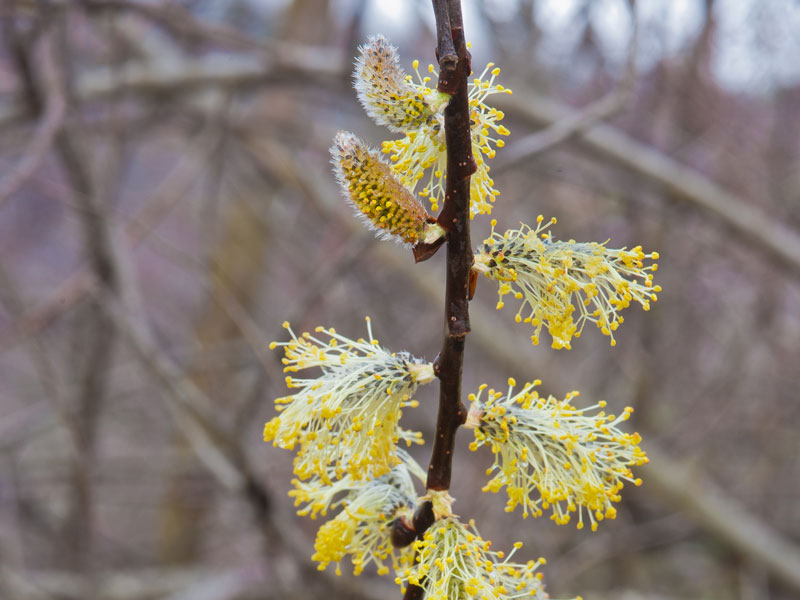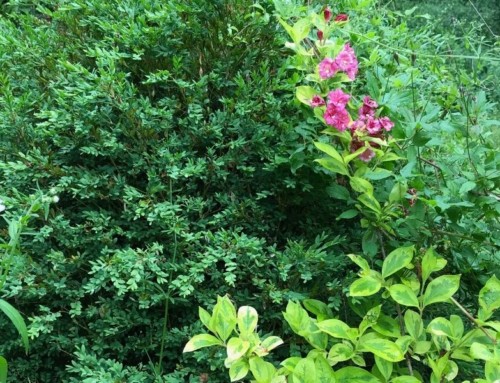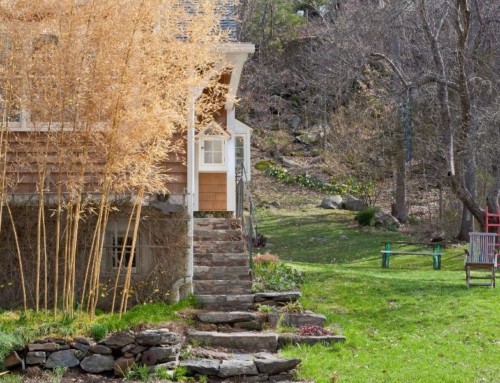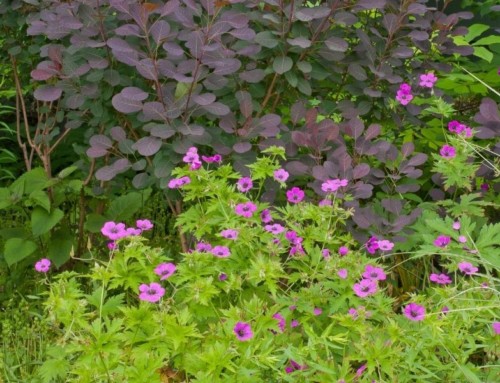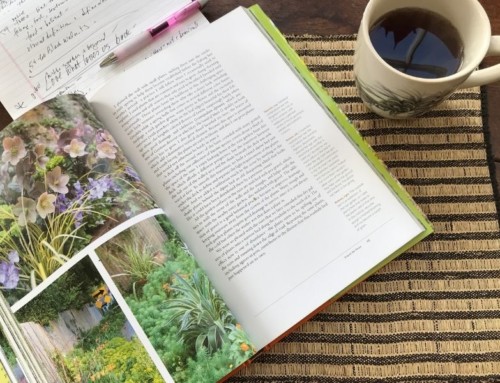Whoever thinks of planting willows (Salix species) for wildlife? We stuff nice neatly mulched beds full of showy summer blooms for pollinators, leave coneflower seedheads for the birds, plant bright-berried hollies for winter food.
But even with 97 North American native species, we hardly notice willows in the landscape. (Except for non-native weeping willows, the knee-jerk response to every suburban pondside setting).
Willows are unsung heroes when it comes to year-round wildlife support and thoughtful plant selection. Entomologist and author Douglas Tallamy ranks native willows second only to oaks as the best host plant for moths and butterflies.
Native willows make attractive, fine-textured small trees, hedges, thickets, ground covers, or specimen shrubs. They’re great for erosion control, biofiltration and bioremediation, easy to grow in a range of soils and fairly trouble-free. Let’s look a little closer for clues…
WILDLIFE BENEFITS BECAUSE NATIVE WILLOWS . . .
- Flower successively over a long period of time (yes, willows bloom, bet you didn’t notice because willow flowers are petal-less catkins), providing nectar and pollen.
- Bloom early, a critical time in the life cycle of many native bees. Pussy willows (Salix discolor) are the first flowers in spring here in Connecticut.
- Have a lot of mass – Black willow trees (Salix nigra) can top 60’ tall; thicket-forming, stream-bank stabilizing willows make a lot of stems, with a lot of flowers.
- Are persistent, reliable food sources for associated wildlife.
- Shrub willows’ twiggy structure is good for nesting birds (goldfinches prefer pussy willows) and for cover.
- The wind in the willows lets hundreds of tiny seeds attached to fine hairs fly through the air with the greatest of ease.
- Some birds eat the seeds. Hummingbirds, yellow warblers and other bird species line their nests with this soft fluff.
- Small leaves make for fine-textured leaf litter, full of seeds and overwintering insects; a boon to foraging birds that feed under safe cover
- Birds go where the bugs are. Larval moths and butterflies = protein-rich caterpillars for raising baby birds
- Grouse and other birds eat willow buds; beavers, elk, deer and moose browse on twigs and leaves.
- And of great importance to pollinators, willows provide both nectar and pollen – but there’s a hitch…
WILLOWS ARE DIOECIOUS – IT TAKES TWO TO TANGO
Willows are dioecious. They have male flowers and female flowers on separate plants – and it takes two to tango. Insect intermediaries are the go-between needed for production of viable seed. Flowers of both sexes produce insect-attracting nectar, but only males make pollen and only females bear seeds. To sustain early-emerging pollinators, make sure you plant some males.
The hitch is that, except for hollies, growers seldom-to-never mark the sex of dioecious plants and it’s hard to figure out which is which. The only way to tell is to be there when they flower and look for colorful (usually yellow or yellow-orange) pollen.
Last year, instead of trying to time a nursery visit right, I went on pussy willow patrol. Hanging out with an industrious beaver who didn’t seem to mind my company, while observing insect action in a pussy willow thicket was a lovely way to start a soft spring morning.
I snipped a few slender stems with fluffy pollen-dusted catkins, stuffed them into a vase of water, and potted them up when they rooted. Now I know I have pollen-producing males. If you have a damp spot, you can just cut a few twigs, poke them into the earth and stick a thicket.
Hollies, spicebush (Lindera benzoin), sumacs and bayberries are all dioecious. If you want berries, you need males and females plus (except for wind-pollinated bayberries) pollinators. And if you want pollinators, you need pollen. The guys get extra points on this one.
